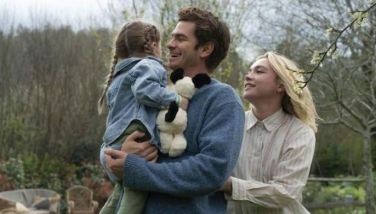On post-credits scenes
A doctor walks in. The patient, whispers, “Hello, Moira.” She turns around, visibly disturbed, and says, “Charles?” A collective gasp from the audience follows. I turn to my brother, and say, “You mean…!” He nods, himself amazed. And so ends X-Men 3: The Last Stand, the first movie, in this age of sequels upon sequels, that instilled in me the habit of waiting for the post-credits scene.
For weeks after watching X-Men 3, I mentioned this scene to anyone who cared to listen, especially those who had rushed out during the credits and missed it. There was a great divide among the X-Men 3 movie-viewing public: those who saw the post-credits scene, and those who didn’t. I was practically giddy to belong to the former, as if I was in on some sweet secret, never mind that I still had more questions than answers, not having followed the Marvel comics. Professor Charles Xavier was still alive! And I knew it!
Which is why I really could kick myself in the ass for not hanging around long enough to catch the post-credits scene of The Pirates of the
And I could really bonk myself in the head for asking her to stay long enough for the cast credits and then leave right after I got the information I wanted. I had read that a famous rock star portrayed Jack Sparrow’s been-there-done-that pirate father in a cameo role and I wanted to know his name.
I did find out that Captain Teague, the pirate who is the Keeper of the Code for the
What I didn’t find out, though, by missing the post-credits scene is that the new Captain of “The Flying Dutchman,” the now-immortal Will Turner (Orlando Bloom), and the new Captain of the “Empress” and Pirate “King” Elizabeth Swann (Kiera Knightley) will have a son. They will reunite ten years later, after Turner fulfills his duty as the ghost ship’s captain. It is also suggested that he will return to mortality, as he will be relieved of his captaincy. Will Turner will again be alive!
It seems to me that film endings are changing these days: more and more films are using post-credit scenes to generate more marketing buzz—for the sequel, or otherwise— or to add just a little bit more spice to the movie-goers’ viewing experience. I’m used to a lot of comic films show more funny scenes during credits or after, and I’ve seen films where the said scenes sort of answer a lot of questions or give closure to viewers’ questions (in Music & Lyrics, for instance, they convinced me that Hugh Grant’s and Drew Barrymore’s characters did fall in love, so I left the theater more or less satisfied). I suppose it’s also a way for the people who worked behind the scenes to make viewers stay and see their names—they give them bonus fun for doing so. I’m thinking of the entertaining credits sequence of the Harry Potter films and A Series of Unfortunate Events, the latter having really great animations.
Personally, I do like staying until after the credits. Perhaps it’s because I’m a behind-the-scenes person myself, or because you also pick up little nuggets about the film from the credits (like where it was shot, how many personal assistants so-and-so had, and did so-and-so really sing the vocals). But mostly, it’s because by staying a few minutes more in my seat, I get to digest the film or stay on escapist mode a little bit longer.
Bill Mousoulis, an Australian independent film-maker, writes in an online article “Taking Leave: A Film Ends”: “The time it takes for a film’s end credits to roll… is a unique time, creating a space for the spectator somewhere between the film’s world and the real world… one can use the credits to reflect, replay, or, emotionally, feel some kind of afterglow.”
Lesson learned… again.
Email your comments to [email protected] or text them to 0920.273.7087.
- Latest
- Trending






















